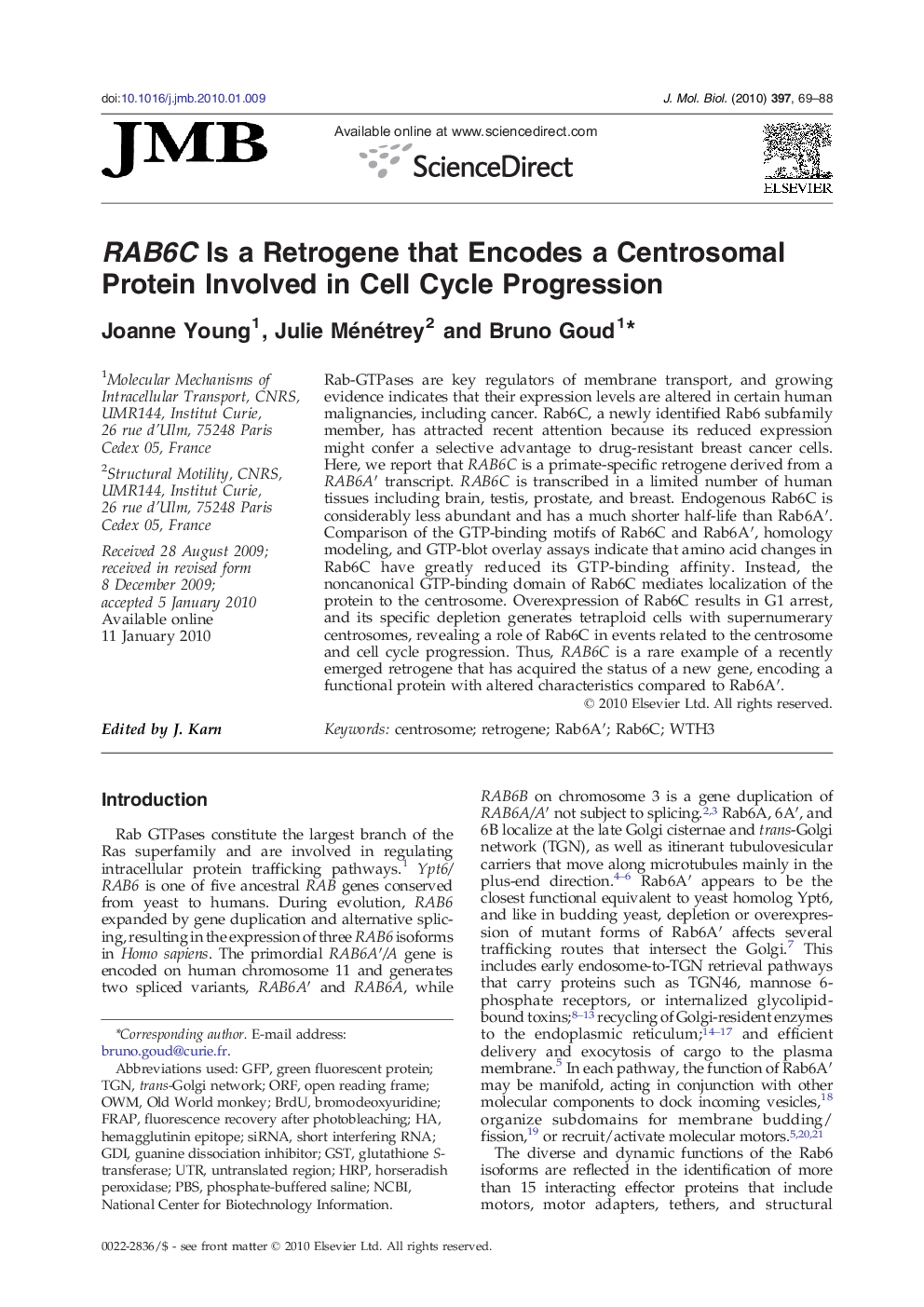| Article ID | Journal | Published Year | Pages | File Type |
|---|---|---|---|---|
| 2185968 | Journal of Molecular Biology | 2010 | 20 Pages |
Rab-GTPases are key regulators of membrane transport, and growing evidence indicates that their expression levels are altered in certain human malignancies, including cancer. Rab6C, a newly identified Rab6 subfamily member, has attracted recent attention because its reduced expression might confer a selective advantage to drug-resistant breast cancer cells. Here, we report that RAB6C is a primate-specific retrogene derived from a RAB6A′ transcript. RAB6C is transcribed in a limited number of human tissues including brain, testis, prostate, and breast. Endogenous Rab6C is considerably less abundant and has a much shorter half-life than Rab6A′. Comparison of the GTP-binding motifs of Rab6C and Rab6A′, homology modeling, and GTP-blot overlay assays indicate that amino acid changes in Rab6C have greatly reduced its GTP-binding affinity. Instead, the noncanonical GTP-binding domain of Rab6C mediates localization of the protein to the centrosome. Overexpression of Rab6C results in G1 arrest, and its specific depletion generates tetraploid cells with supernumerary centrosomes, revealing a role of Rab6C in events related to the centrosome and cell cycle progression. Thus, RAB6C is a rare example of a recently emerged retrogene that has acquired the status of a new gene, encoding a functional protein with altered characteristics compared to Rab6A′.
